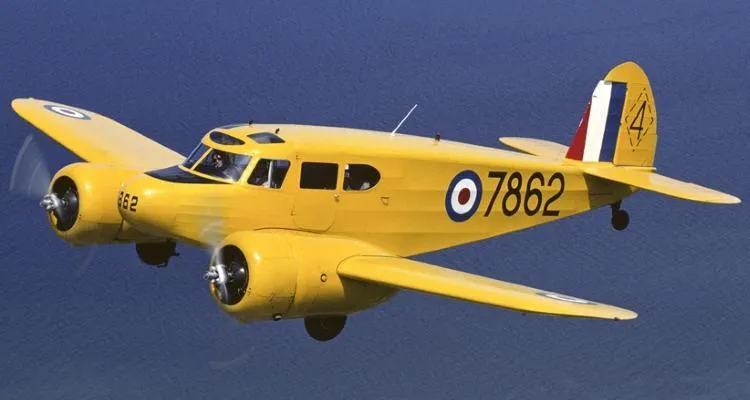Briggs, Francis Evan Robert
Killed in Flying Accident 1941-09-13


Birth Date: 1915-July-23
Born: Cartwright Township Ontario
Son of Edward R. Briggs and Frances E. Briggs, of Toronto; husband of Christine Briggs, of Ottawa.
Home: Toronto, Ontario
Enlistment:
Enlistment Date: Unknown
Service
RCAF
Unit
T&DE- Test & Development Establishment
Base
RCAF Stn, Rockcliffe, Ontario (Ottawa)
Rank
Squadron Leader
Position
Squadron Leader
Service Numbers
C/199
Home
 Toronto, Ontario
Toronto, Ontario
First Burial
 Prospect Cemetery, Toronto, Ontario
Prospect Cemetery, Toronto, Ontario
This incident involved multiple aircraft:
- Crane Mk. I Serial: 7919
All the above aircraft in the above list are referenced in this report.
Cessna Crane

Canadian Warplane Heritage Museum
The Cessna T-50 Crane was the RCAF version of the Cessna AT-17 Bobcat, a twin-engined advanced trainer designed and made in the USA during the Second World War. It served to bridge the gap between single-engined trainers and twin-engined combat aircraft.
First flown in 1939, the American-built Cessna Crane was developed as a five-seat, light transport civilian aircraft. It was originally intended to serve only a minor role within the BCATP (an initial 180 were ordered in 1940) until the Canadian-built Avro Ansons became available in greater numbers. This was the first large order that Cessna had received for one of its products. Eventually, more than 5,400 Cranes would be produced, of which 826 saw service with the RCAF. Cessna Cranes were used primarily to teach future bomber pilots, after they had received their initial training, to fly multi-engined aircraft at Service Flying Training Schools in western Canada.
Powered by 245-horsepower Jacobs R-755-9 radial engines, Cessna Cranes featured wooden wings and tail married to a fuselage constructed of welded steel tubing. Most of the aircraft was fabric-covered. It was cheap, reliable and relatively easy to fly, with a top speed of 315 kilometres (195 miles) per hour.
The Crane provided twin-engined complexity with economy of operation and went on to become one of the most important aircraft used by the BCATP. Cranes continued to serve with the RCAF until 1947, after which many were purchased by private individuals and companies.
Nicknamed the Bamboo Bomber because of its largely wood construction, the Crane had a reputation as a stable and reliable aircraft. Although not an ideal training aircraft because of its poor single-engined performance and load-carrying capability, it performed its duties satisfactorily and helped train several thousand bomber pilots.Bomber Command Museum of Canada
Crane 7919
Crane Mk. I 7919
Also reported as delivered to RCAF Station Ottawa on 26 August 1941. To Test & Development Establishment at Rockcliffe on 6 September 1941. Flown by crew from T & DU on 13 September 1941, in test to determine if Vne could be increased from 200 mph to 225 mph. Part of tail plane and fabric left the aircraft during pull out from dive, crashed at 12:50 PM local time, south of RCAF Station Uplands. Pilot Squadron Leader F.E.R. Briggs and test engineer Flight Lieutenant W. Richards killed. Engines transferred to Laurentian Air Services for salvaging.1941-08-28 Taken on Strength No. 2 Training Command 2019-08-20
1941-September-13 Accident: ID ESTAB Loc: Ramsayville Ontario Names: Briggs | Richards
1941-10-18 Struck off Strength Struck off, reduced to spares and produce 2019-08-20
 Canadian Virtual War Memorial
Canadian Virtual War Memorial Commonwealth War Graves Commission
Commonwealth War Graves Commission www.findagrave.com
www.findagrave.com Cessna Crane Trainer
Cessna Crane Trainer Wikipedia Crane Trainer
Wikipedia Crane Trainer Harold A Skaarup Web Page
Harold A Skaarup Web Page